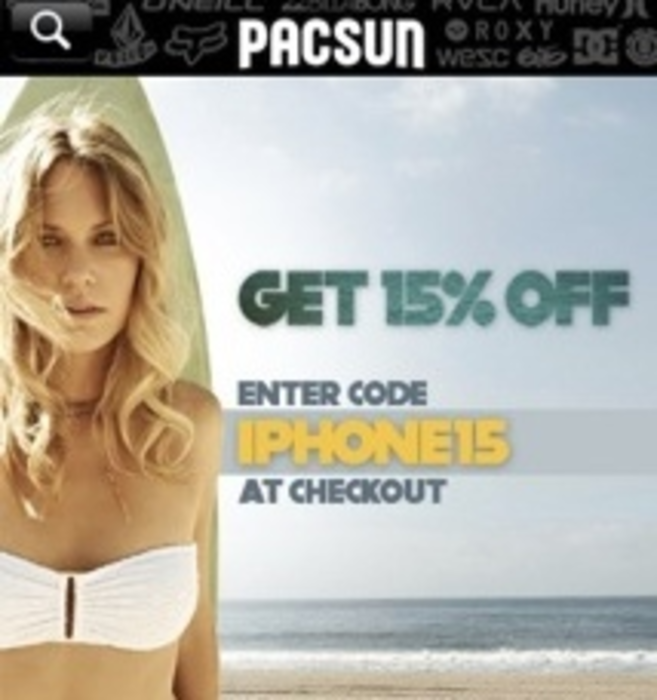As smartphones’ share of the mobile marketplace rises, marketers have been quick to launch mobile applications that take advantage of the devices’ capabilities. Unlike a mobile-optimized website, a mobile application can utilize a phone’s camera and accelerometer. But the growth of dynamic coding language HTML5 has enabled mobile sites to match an app’s ability to use smartphones’ location-based services. Rather than offer exclusively an app or solely a mobile site, marketers such as Pacific Sunwear and Expedia provide both as companion pieces.
No doubt, mobile applications have unique advantages over a mobile-optimized site. On May 18 retailer Pacific Sunwear debuted its first iPhone app, which not only drives the company’s mobile presence but its customers’ in-store experiences as well. Unlike PacSun’s mobile-optimized site, its app, developed with mobile services firm Usablenet, can call upon an iPhone’s camera. PacSun employs the capability through an in-app barcode scanner that delivers offers and product information when users scan in-store QR codes. Also unique to the app is the ability to alert consumers of sales and events via push notifications and data collection opportunities.
While Pacific Sunwear does not currently feature any in-app consumer information forms, Tim Katz, senior online operations manager at PacSun, says that such data collection would allow the company to deliver more tailored promotions. “The more we know, the more targeted the push notifications can be,” he says, adding that an app is better suited for such data collection than a mobile site because of its closed system.
But one challenge a mobile app may face is reach. Katz says that a majority of visitors to PacSun’s mobile site use iPhones, but not all companies have such a homogeneous consumer base and could risk alienating certain segments.
“The one thing we can’t forget about is that most of the users globally are using phones that are not necessarily capable of downloading applications, or are more suited to web-browsing,” says Darren Austin, director of mobile at Expedia. Because the travel site has a global consumer base, a significant number of whom don’t sport iPhones or Androids, Austin says it’s important for Expedia to balance its mobile focus.
“The way we look at them, apps are really all about rich, engaging experiences and mobile web is about getting things done quickly,” says Darren Austin, director of mobile at Expedia. “So our approach in mobile web is making sure we understand the most important use cases for customers, and establishing that use case in a way that they can get in and get out as fast as they possibly can.”
Expedia and Usablenet began re-coding the company’s mobile-optimized site in HTML5 this April. Austin says while the site can’t use a phone’s camera, it can take advantage of location-based services to deliver more relevant airfare results and hotel information. For PacSun’s part, Katz says the company is also readying an HTML5 that will employ the geo-targeting capability. While for now PacSun’s iPhone app boasts more interactive features than its mobile site, Katz says he doesn’t see the former overshadowing the latter.
“We don’t say either-or. It’s whatever’s most convenient [for the consumer],” he says. “If you want to load up Safari on your iPhone and go to the mobile website, that works for you—or you can use the app. We’re not trying to downplay one or the other.”







